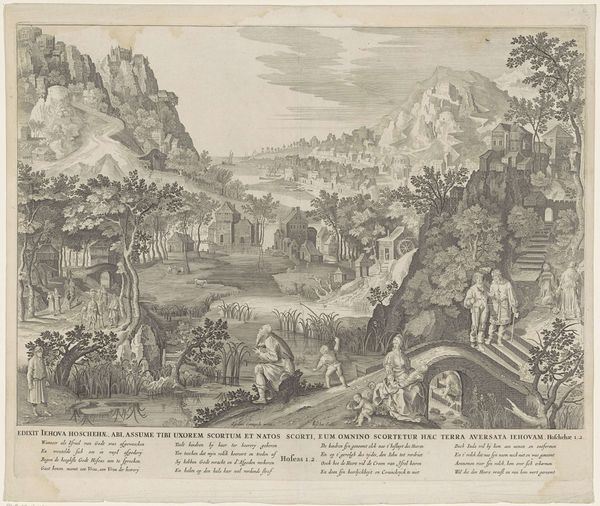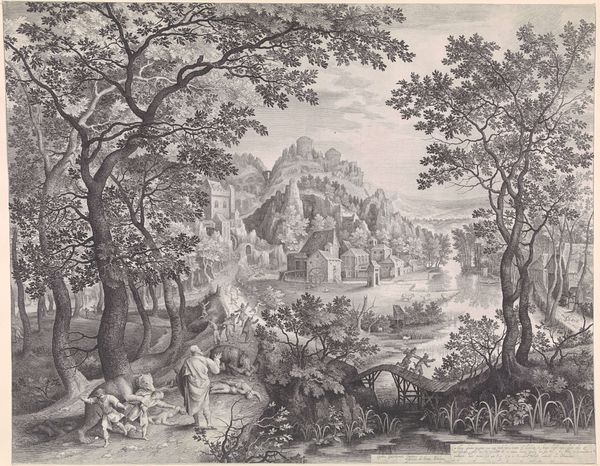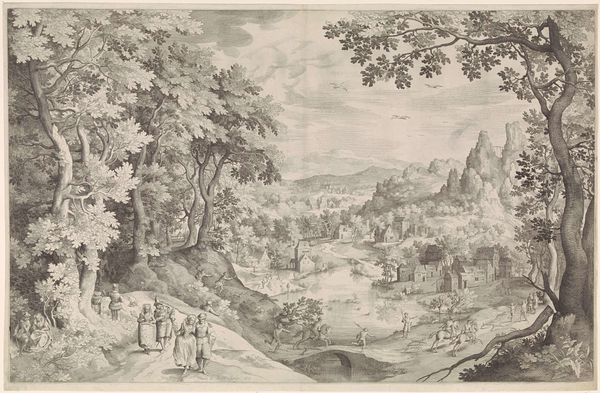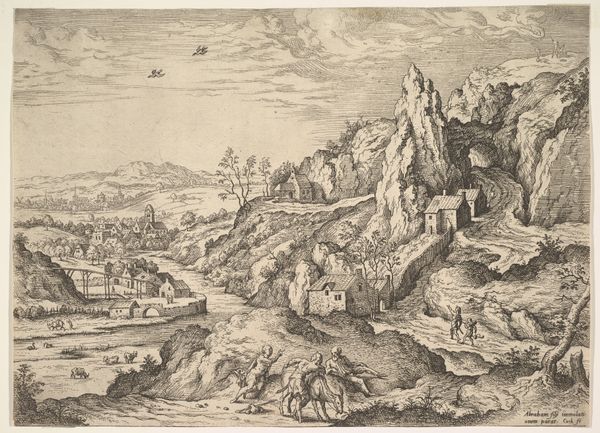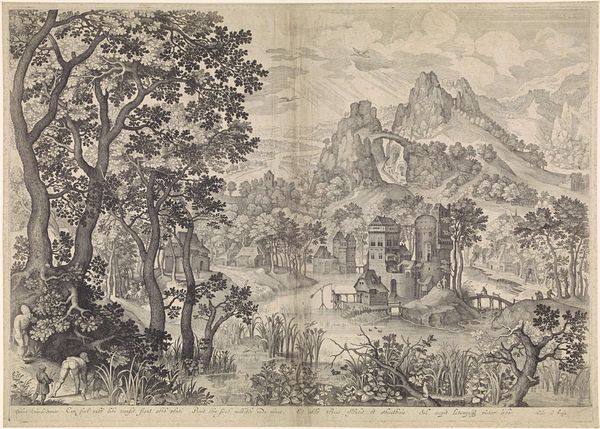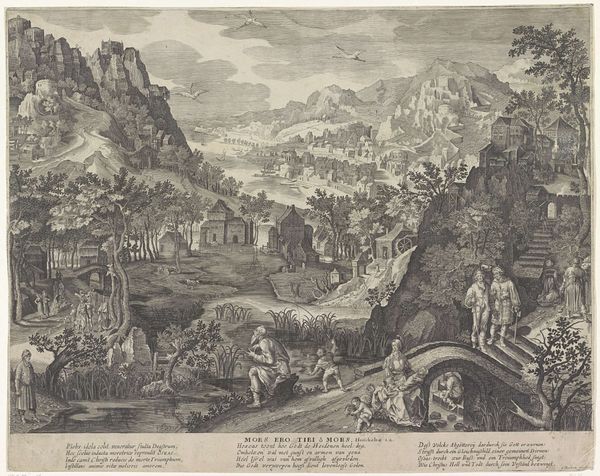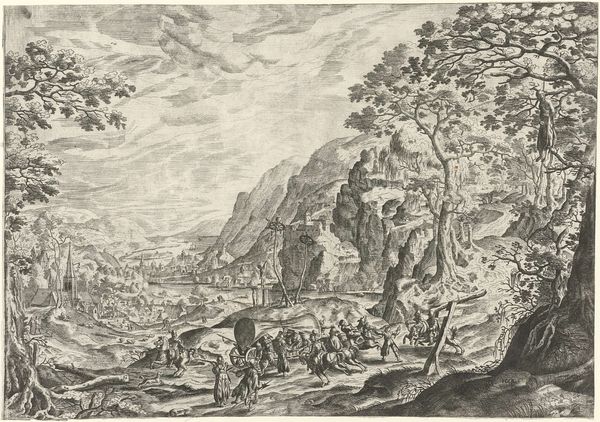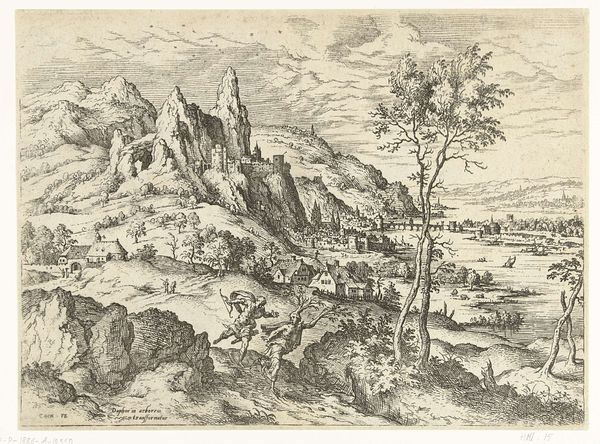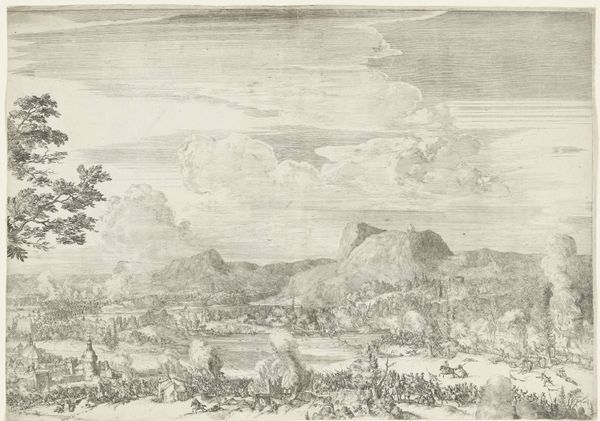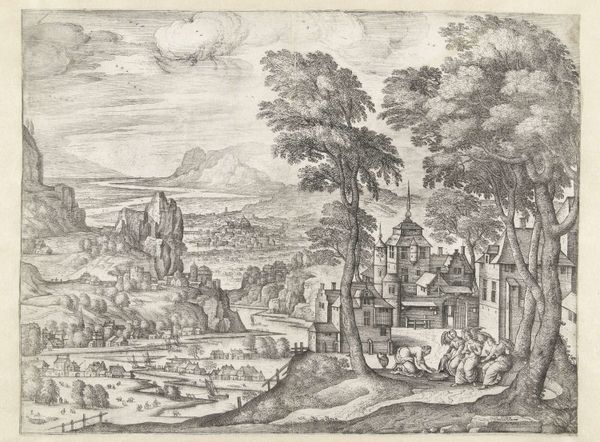
drawing, print, ink, engraving
#
drawing
#
ink drawing
#
baroque
# print
#
landscape
#
ink
#
genre-painting
#
engraving
Dimensions: width 664 mm, height 443 mm
Copyright: Rijks Museum: Open Domain
Editor: So, this is "Hosea and the Adulterous Wife in a Landscape" by Nicolaes de Bruyn, created sometime between 1642 and 1665. It's an ink engraving and it gives a sweeping view of what feels like an entire world. The level of detail is fascinating! What’s your take on it? Curator: This piece exemplifies how prints facilitated the circulation of ideas and narratives during this period. De Bruyn's skill with engraving allowed for the mass production of this biblical scene, making it accessible to a wider audience beyond the elite. Consider the labor involved: the meticulous process of transferring the design onto the plate, the physical act of engraving each line, and then the printing itself. How do these methods influence our understanding of the art? Editor: That’s interesting. It’s easy to get lost in the story being told but you're making me consider the printmaking as production. How does that perspective change what we see? Curator: It encourages us to question the artist’s role, right? Is De Bruyn the sole author, or is the workshop, with its multiple hands, part of the creative process? It also reveals social dynamics – who was consuming these prints, and how did their understanding of morality influence the demand for such scenes? It's a commodity embedded with cultural meaning. Editor: It's like considering the materials themselves—the ink, the paper, the metal plate—as active participants. I hadn't really thought about prints this way. I see it more clearly now, a shift from artistic expression to manufactured goods! Curator: Precisely. It’s a lens to examine art not as a product of individual genius, but as a result of material conditions, labor, and broader socio-economic factors. It helps demystify the aura around art objects. Editor: Well, that has certainly reshaped my understanding. Seeing the work through the process and distribution allows an entry point I hadn't considered. Curator: Exactly, by recognizing and appreciating the material processes and socio-economic systems that shaped the artwork, our appreciation and knowledge deepens.
Comments
No comments
Be the first to comment and join the conversation on the ultimate creative platform.
